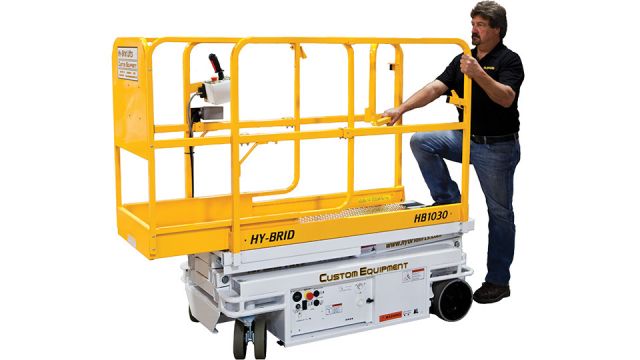Benefits of the low-level scissor lift
Product watch
There is a misconception that general contracting projects like framing, painting and installing HVAC, electrical systems or drywall require a 19-foot scissor lift. But there is more to choosing the best lift for your job than just how high it can go. Although low-level scissor lifts come in just below that 19-foot height, they go above and beyond their size in terms of capabilities.
Low-level access lifts are designed to increase safety, efficiency, ease of use and convenience, giving users the ability to complete 90 percent of the jobs typically reserved for 19-foot lifts. An added benefit is that, because of their size and maneuverability, the low-level lifts can be the first piece of equipment on the site and the last to leave.
A majority of jobs completed on any construction project or in any maintenance or industrial application occur in that 18- to 20-foot working height range. Lift heights of low-level access lifts typically are from eight to 14 feet, but six feet need to be added to calculate the working height. Therefore, the working height for most low-level access lifts is between 14 and 20 feet.
One of the key factors to consider when evaluating a lift beyond just height is working space. Many low-level lifts have two-person occupancy, but also can hold more weight – up to 750 pounds on some models. Platform sizes on low-level lifts range from 25 to 30 inches wide by 60 to 70 inches long. For even more room, extensions add up to 36 inches of platform length.
A scissor lift that can handle the weight and capacity of two workers plus all the tools certainly is a productivity benefit. Entry heights on 19-foot lifts can be as high as 42 inches, which makes getting onto them a challenge, especially when carrying tools and supplies. Low-level scissor lifts are designed to cater to the contractor and maintenance markets with entry heights as low as 20 inches – only one step – which makes getting on and off the platform easier and safer.
Heavier lifts aren’t the only thing that can damage floors; hydraulic systems can be a culprit, as well. The hydraulic system on low-level lifts typically only powers them up and down, while battery power operates the driving and steering. This configuration has only two connection points, so the chance of a leak is greatly reduced.
Low-level scissor lifts can be as narrow as 25 inches, and they feature stowed heights as low as 66 inches. This provides more clearance for getting under doorways and into elevators, even with taller materials on board. And, because users can choose the right lift with the right working height for the job, the risk of users becoming crushed between the ceiling and lift is reduced. Low-level lifts also feature platform lengths as short as 47 inches, so they can easily fit in any elevator in the United States that’s built to code.
Originally published in Masonry magazine.
About the Author
Justin Kissinger is marketing manager for Custom Equipment, Inc.



















